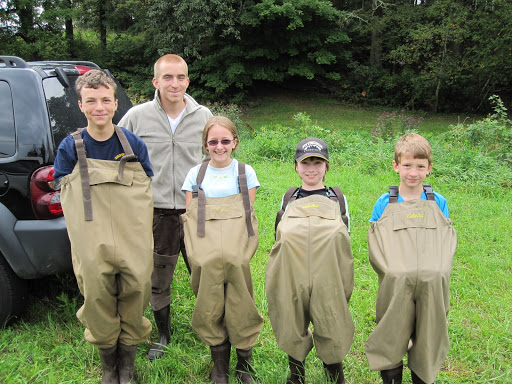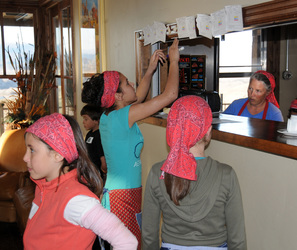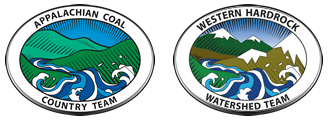Based on the work of
Friends of Deckers Creek
Northern West Virginia
Friends of Deckers Creek’s (FODC) Youth Advisory Board (YAB), formed in 2006, is “open to all youth 18 and under interested in the future of Deckers Creek and willing to work 30 hours a year volunteering for FODC and YAB,” according to the YAB’s bylaws. Their mission is to increase youth participation in helping clean up the Deckers Creek watershed for conservation, preservation and recreation through youth-led projects and research. FODC uses a YAB as a creative way to engage youth, while also incorporating their voice in the management of the organization. With help from an adult coordinator, these youth volunteers created their own by -laws, mission statement, and more. They’ve participated in rain barrel workshops, water monitoring and recycling programs. They have a representative that sits on the FODC’s board.

Tested by
Piney Creek Watershed Association
Southern West Virginia
Piney Creek Watershed Association (PCWA) reached a plateau with their youth outreach and wanted a youth advisory board (YAB) to kick off continued youth engagement efforts. A discussion with Friends of Deckers Creek (FODC) launched a more elaborate plan: FODC was working with The Mountain Institute, an international nonprofit dedicated to generating awareness for the critical role mountain regions play in sustaining life, to develop sustainable youth advisory boards. In partnership with The Mountain Institute (TMI), FODC and local middle school and high school youth and educators, PCWA sought grant funding to establish and facilitate a Watershed EYES (Engaging Youth in Environmental Service-Learning) Youth Advisory Board. PCWA proposed to use the successful YAB model built by FODC and supported by TMI that encompasses a number of activities addressing the entire continuum of environmental education. PCWA was unable to form a YAB due to lack of funding and adult volunteers. Perhaps more importantly, no adult member of the organization was interested or able to champion the YAB to move it forward and gain a youth base.
Tested by
Kids’ Pasta Project
Western Colorado
As a program dedicated to helping youth serve their community and learn through the process, the idea of empowering youth volunteers is a top priority for the Kids’ Pasta Project (KPP). Developing a youth advisory board (YAB) was a way to formalize this intention. KPP needed to explore ways of involving youth more in management—not only to enhance their educational experience, but also to help ensure the sustainability of the organization. The formation of a YAB was an ideal opportunity for youth to learn to work together, discuss issues, offer thoughtful input and communicate effectively with the board and community. KPP advertised the creation of a YAB and received applications from interested youth. Every child that applied was accepted and invited to the YAB’s first meeting where they elected their board. Scheduling management meetings at times when youth were available was difficult, so regular management activities had to continue without consistent input from youth. In hindsight, KPP recommends detailing the YAB charter before announcing its formation so that the YAB can get right to work instead of being bogged down in discussions of possible functions and responsibilities. The KPP board was not fully engaged in the YAB development and board members were not available to mentor the YAB officers as planned.

“It is very difficult to schedule meetings around everyone’s schedules. There are probably too many YAB members, but we decided to let all of the kids who had applied be a part of it in some way. This is fine but we need to find very specific roles for each member. The charter of YAB is very broad by design, but it would probably be best to offer specific activities for YAB so that they can focus.”
-Kids’ Pasta Project
